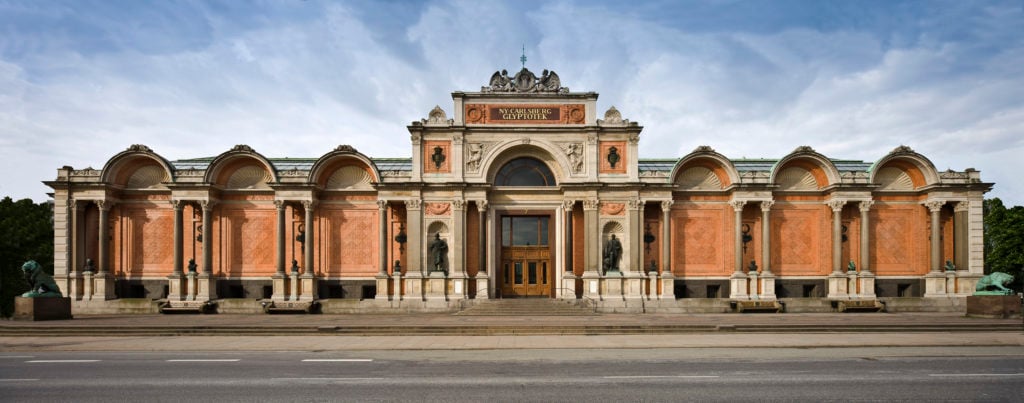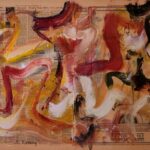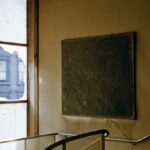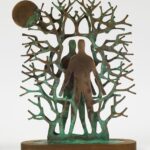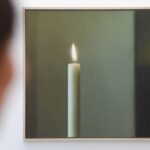Only one of Copenhagen’s many museums honors broken noses. Among the elegant Glyptotek Museum’s extensive collection of archaeological artifacts, modern paintings, and many sculptures from antiquity hangs a quiet cabinet called the Nasothek. Behind its glass lie nine neat rows of nearly 100 noses that formerly adorned the museum’s sculptures.
Danish Brewer and avid art collector Carl Jacobsen, founder of the Carlsberg beer brand, established the Glyptotek Museum in 1897. Today it sprawls across two mansions, connected by a courtyard. The Nasothek isn’t historic in the same capacity as the sculptures surrounding it. Instead, this display honors the evolution of art conservation.
White marble is a notably fragile material. Many of the historic sculptures throughout the Glyptotek—and beyond—sustained damage by the time museum staff got a hold of them. A nose on a person is vulnerable enough—on a sculpture, it’s in peril. Noses are typically the first part to break off. Up until the 19th century, it was fashionable for conservators to fix such chipped sculptures up with a nose job, so they’d look as close to their original state as possible, no matter how inauthentic the means.
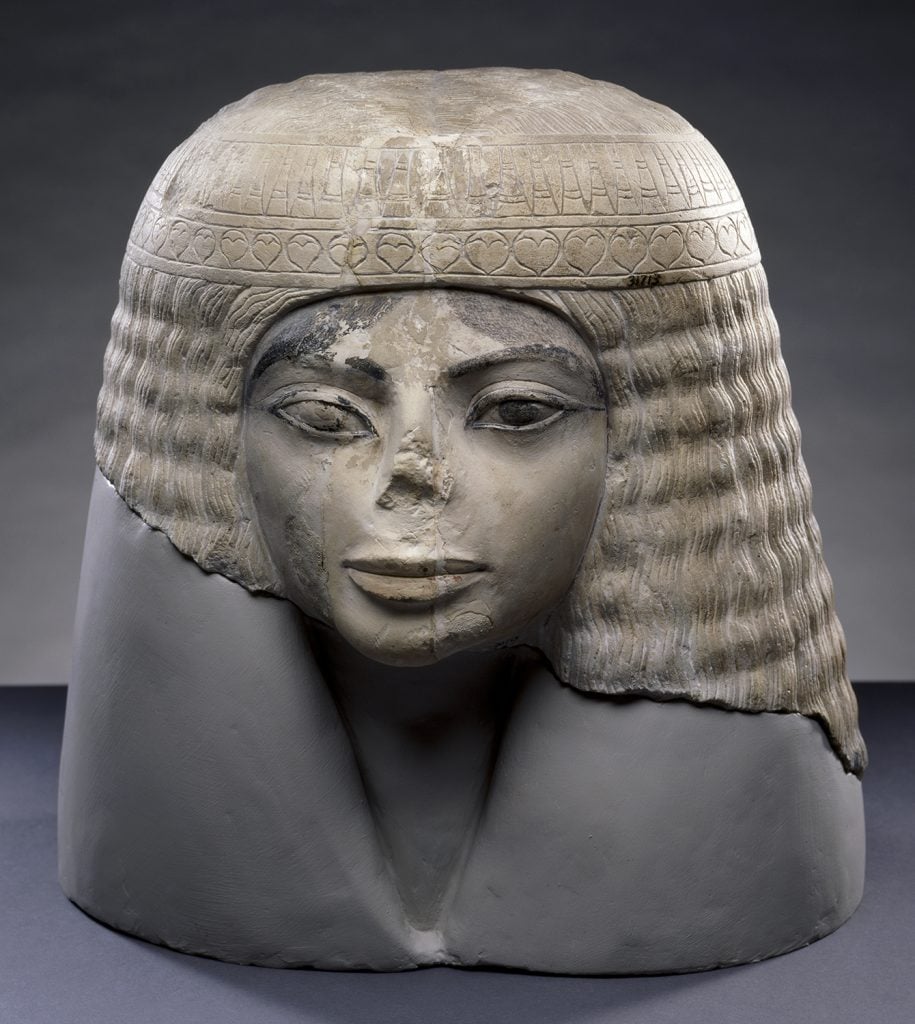
Ancient Egyptian statue. Photo: John Weinstein, Field Museum of Natural History – Photography Division © Field Museum of Natural History.
Eventually, conservators began favoring natural wear and tear over phony fixes. About 25 years ago, as the Glyptotek’s curator of Greek and Roman art Anne Marie Nielsen told Smithsonian, “the museum had a box filled with noses [in our archives], and we weren’t sure what to do with them… We decided to group them together and put them [on display].”
Thus, the Nasothek was born. Wall text explains that its name combines the prefix “naso,” for noses, with “thek,” which references “discotheque,” a collection of records. The eccentric display draws visitors from around the world, like the British installation artist known as Tasha Marks | AVM Curiosities.
A display of noses once used to “repair” Roman and Greek marble statues in the 19th century. The Nasothek (Latin for “nose” and Greek for “container”) was born when the fake noses were removed in the interest of authenticity. At the Copenhagen’s Glyptotek art museum, Denmark. pic.twitter.com/H8MdoQZOU2
— Ticia Verveer (@ticiaverveer) June 2, 2018
“I first went to Copenhagen in 2019,” Marks told me over email. “I’ll go out of my way to see an unusual collection—so before I arrived in Copenhagen I’d already planned to go to see the infamous noses.” She even returned to see the Nasothek again in 2022.
The absurd little display left such an impact on Marks that it helped inspire her latest installation, The Noseum, at Liberty London in SoHo. There’s some variety to the Nasothek’s array, but nowhere near the diversity on view throughout the streets of present-day London. Marks and her collaborator Jon Beck worked onsite for three days scanning the faces of Liberty staff, customers, friends, and perfumers all invited via open call in order to craft a contemporary, truly inclusive nasal spectacle that spans a whopping 360 noses.
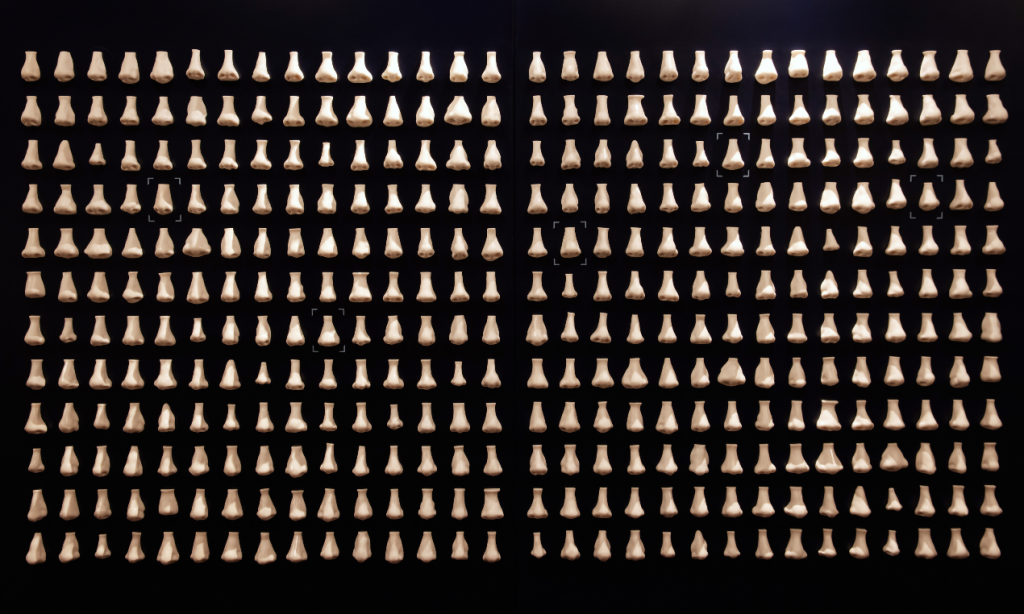
The Noseum. Courtesy of Tasha Marks | AVM Curiosities.
Marks even engineered the work so five noses, each denoted with a little blue frame, emit a perfume at all times. Their heights are evenly distributed so everyone can get “nose-to-nose” with the work, and the aroma will change every two to three months. It just goes to show, sometimes there’s compelling ideas hiding just beneath, well, you know where.
What’s the deal with Leonardo’s harpsichord-viola? Why were Impressionists obsessed with the color purple? Art Bites brings you a surprising fact, lesser-known anecdote, or curious event from art history.
Follow Artnet News on Facebook:
References: this article is based on content originally published by Vittoria Benzine on Artnet. You can read the full article here.
